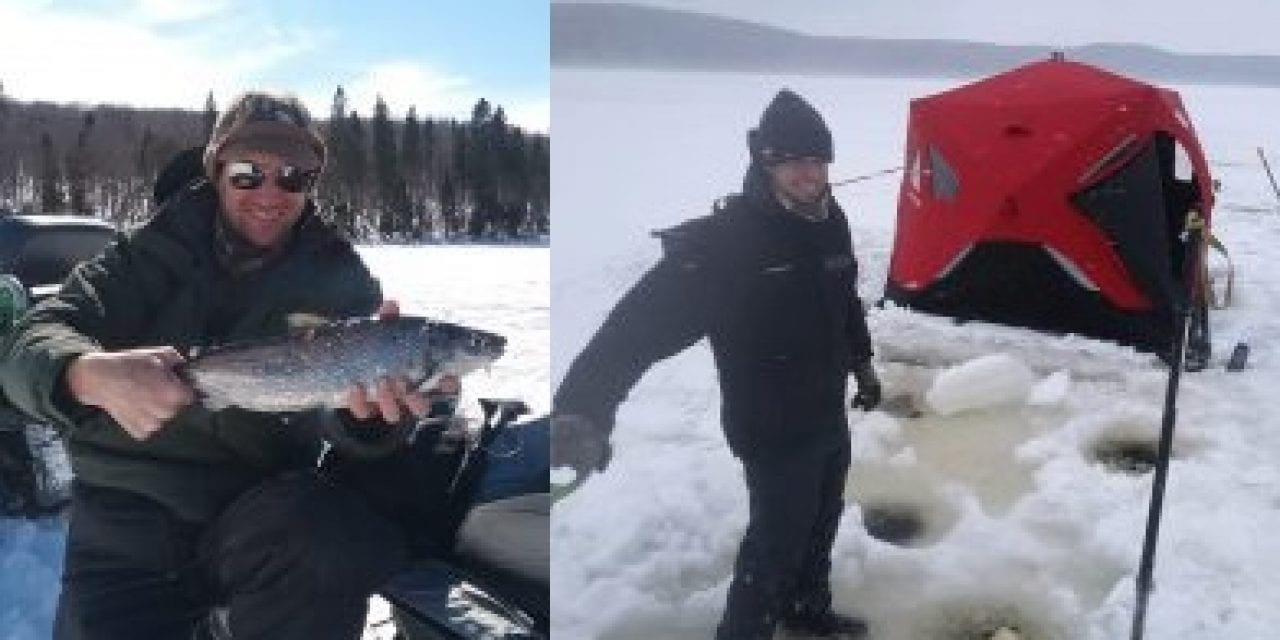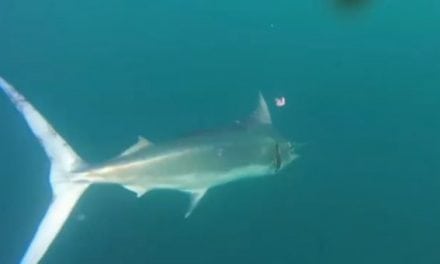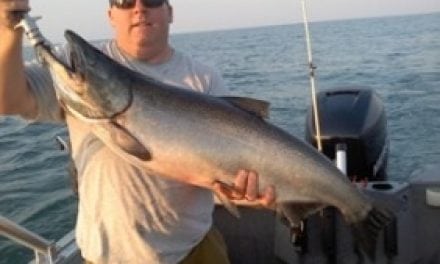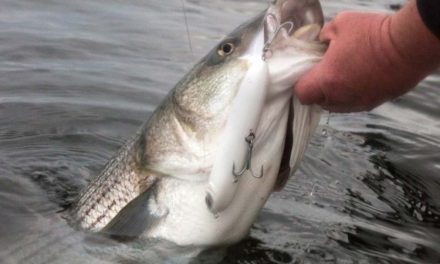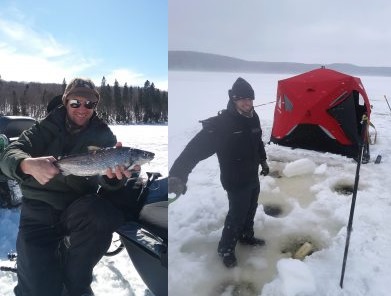
Lake whitefish, a Maine native, can be a prime target for ice anglers interested in jigging up large fish on small tackle. In addition to being great fighters, their white flaky meat makes for a tasty and hearty meal. However, over the last century whitefish have experienced widespread declines across the state. Remnant populations are scattered across northern and eastern Maine including a few populations in the Allagash and Saint Croix watersheds healthy enough to sustain a fishery. Where we have seen declines, signs often point to rainbow smelt as the main reason. Smelt, a species native to Maine, but not northern Maine, was introduced decades ago to support togue and salmon growth in many waters. Smelt share similar diets and foraging patterns to young whitefish and it is believed that smelt compete with, and likely prey upon juvenile whitefish. The concern of further declines across Maine has prompted recent research focused on better understanding whitefish populations and their interactions with smelt.
This fall, we initiated a new research project to characterize whitefish spawning life history strategies and to assess suitable spawning habitat. Whitefish are known to use a variety of habitats, including windswept rocky shoals and tributary streams, to lay their eggs. The availability and use of these different habitat types in specific waters is largely unknown to date. Additionally, in waters where whitefish and smelt co-occur, the type of habitat whitefish use for spawning may affect their progeny’s chance of survival; a question that has become a focal point of our research.
In October 2018, I was hired on by MDIFW to conduct whitefish research, and began with spawning ground surveys in Clear, Second Musquacook, Ross, Big Indian, Crescent, and Haymock lakes. We conducted visual surveys and mapped suitable spawning substrate in each lake and its tributaries and outlets. Whitefish, like togue, prefer clean well layered cobble where their eggs can settle in the cracks protected from predators. After identifying these potential shoals/tributaries, we deployed egg collection mats prior to whitefish spawning season to capture eggs as whitefish deposited them during spawning.
Egg mats are a simple but effective tool for biologists to determine spawning habitat use. A) Egg mats made with a standard cored concrete block and a thick natural hog hair furnace filter sheet where eggs can settle after fish spawn. These mats are tied together in “gangs” of three to cover a broad area B) An egg mat settled in the cobble of Second Musquacook stream prior to being checked. C) Identifying and counting whitefish eggs after they have been picked from the mats. Whitefish eggs are typically 2-3mm in diameter.
Although an abnormally early freezup has made egg mat retrieval challenging, we’ve already made some interesting discoveries. We have been able to confirm whitefish spawning activity on two shoals in Clear Lake, and have found that whitefish in 2nd Musquacook Lake are likely spawning exclusively in the inlet stream as there is little to no other suitable habitat in the lake.
Additionally, we found whitefish spawning activity in the outlet of one of our study lakes, a place we never suspected spawning whitefish would use!
As we continue to collect egg mats through the ice, initial findings are encouraging. As usual, answered questions lead to more questions as we work toward the next phase of whitefish research. Future elements of this project include assessing the age structure of multiple whitefish populations as well as conducting stomach analyses of spawning smelt in the spring to examine at what degree they are preying on freshly hatched whitefish.
Interested in learning more about whitefish? Check out the Current Status of Lake Whitefish in Maine written by the Department’s Principal Whitefish Investigator, Jeremiah Wood.
This Project is funded in part by the U.S. Fish and Wildlife Service’s State Wildlife Grant Program and by the Maine Outdoor Heritage Fund, in which proceeds from the sale of a dedicated instant lottery tickets are used to support outdoor recreation and natural resource conservation. For more information about MOHF, visit maine.gov/ifw/mohf
Related Articles:
- A New Year Brings New Threats To Maine’s Bear Heritage
- Maine’s Sheepscot River Fish Passage Project Underway
- Maine man hauls 25-pound togue (laker)
The post Lake Whitefish Research Underway in Maine appeared first on OutDoors Unlimited Media and Magazine.

